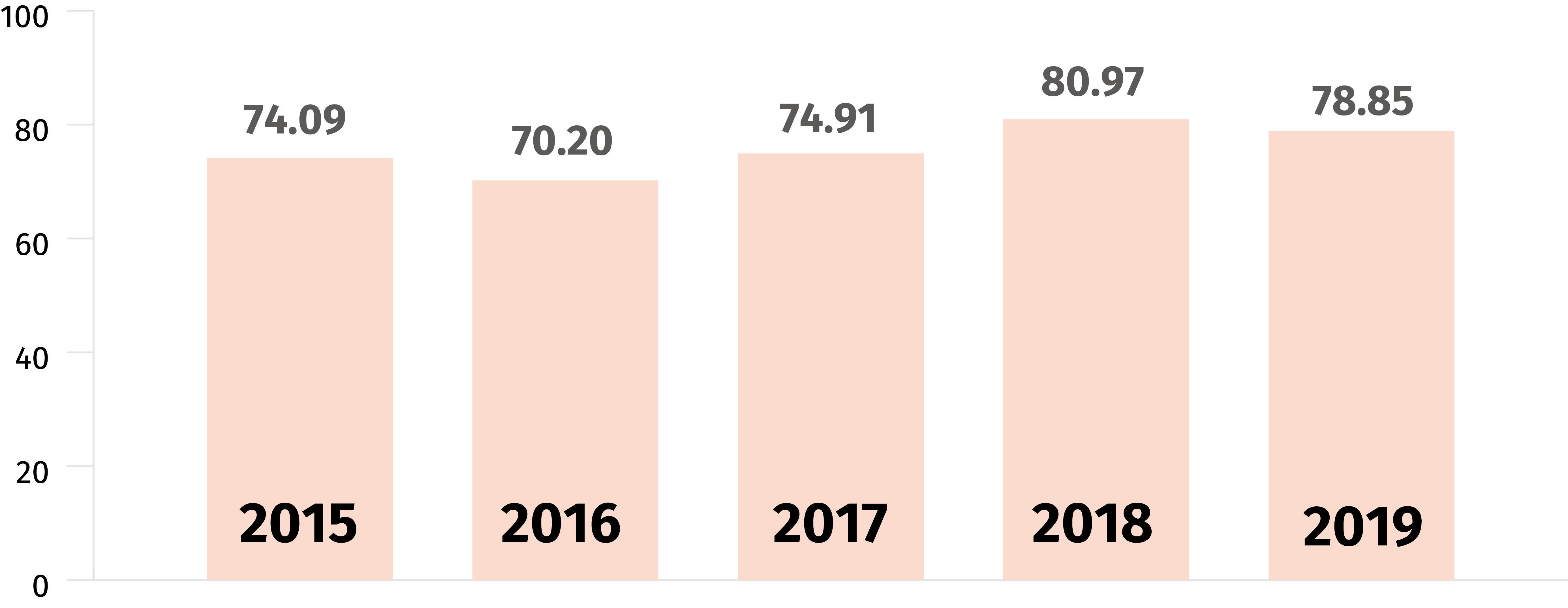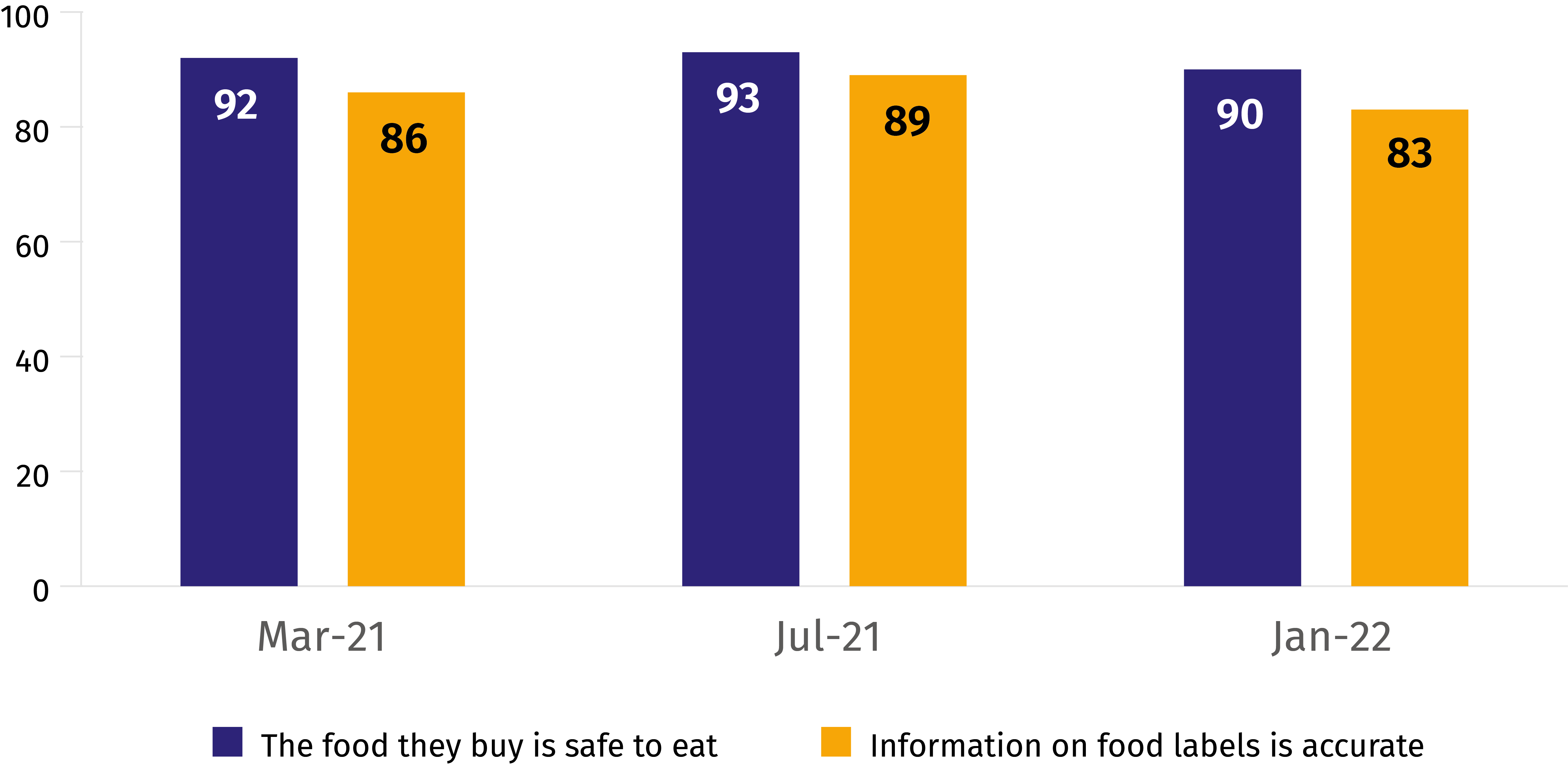Implementing the strategy and measuring progress
How the FSA will implement its 5-year strategy and measure progress in priority areas.
This strategy sets our direction for the next five years. We expect our organisation and our work to evolve to meet the ambitions we have set out.
We will need to be flexible in our approach, particularly as we explore new areas of our strategy such as our vision for food that is healthier and more sustainable.
We are setting our corporate objectives and work plan for the first year alongside this strategy and will set work plans for subsequent years through our corporate planning process. We will discuss these at public Board meetings. We will also work with external stakeholders to inform work planning, as part of our commitment to work with and through others.
We know from the last five years with EU exit and the COVID-19 pandemic that our context can change significantly. But we expect this strategy to provide the framework with which to face those changes: clarity about our vision, our objectives, and how we are going to do our work.
Having set out our strategy, we will need to make sure that the FSA has the capacity and capability to deliver on it. We will include in our work plans some internal pieces of work that help us to build that resource, and to ensure that the guiding principles are fully embedded in the FSA.
Our people plan
We are developing a new people plan to enable us to deliver on our strategy. Its focus will be on maximising organisational capability, living our values, ensuring an excellent employee experience and growing and developing our people.
Services approach
We believe it is important to see some of our work as a ‘service’ for the public, industry, local authorities or other parts of government. We have applied a service design approach to our digital services for some time but are now expanding this into other areas of our organisation. This will include increasing the amount of feedback we receive on our work, establishing and monitoring performance metrics and redesigning some of our processes to work more smoothly. Through this process we aim to make it easier for businesses to meet their obligations and do the right thing.
Measuring progress
Existing measures
The food system is incredibly complex. To measure the successful delivery of our strategy, we will need to consider a range of metrics acknowledging the complexity involved in measuring progress in the food system.
There are also many actors, including the FSA, with different roles and responsibilities to make food safe, what it says it is and healthy and sustainable. This means we will need to look at progress from several angles.
The FSA has a performance reporting system with a cascade of metrics and targets, from our top-level strategic objectives down to the daily activities of our frontline work. We publish performance data on a regular basis, for example in performance and resources reports to the FSA Board’s Business Committee.
We plan to evolve this performance reporting system and use it to measure progress against our new strategy.
Many of the existing measures already align with our new strategy including on whether food is safe and food is what it says it is.
For example, relating to our vision that food is safe, we publish figures for the number of laboratory confirmed cases of the ‘big four’ food pathogens. These are the number of cases, confirmed by laboratory tests, of four of the main sources of foodborne illness – E. Coli, Salmonella, Campylobacter and Listeria. This allows us to measure an outcome in the food system we want to see - that cases remain low.
Lab confirmed cases of ‘Big 4’ food pathogens (000s)

We regularly measure consumer perspectives on the food system and of the FSA:
Percentage of consumers who are confident in food safety and authenticity

We also publish measures of the contribution the FSA and others in the food system make to achieving these outcomes.
For example, we report on the percentage of Food Business Operators (FBOs) achieving FHRS ratings of five (meaning very good) and those receiving a rating below three (meaning below satisfactory). We also report on the percentage of meat FBOs who are rated as satisfactory or above for compliance and audit activity.
Percentage of businesses achieving FHRS score five (very good)

Percentage of meat businesses audited rated 'good'

These measures continue to represent a picture of the performance of the FSA and the food system as a whole and provide a useful baseline to measure progress against.
Updated and new measures
We will develop new metrics and revise our performance reporting to fit this new strategy.
To effectively evaluate our strategy, our metrics will go from ‘end-to-end’, so we have numbers for own our activities and outputs, for how the food system overall is doing and how those join together so we can assess our particular contribution:
- Developing and improving measures covering our core role in food that is safe and food is what it says it is.
- Incorporating the right set of measures to understand progress in the area of food that is healthier and more sustainable (building on existing nutrition measures we use in Northern Ireland).
- Incorporating measures relevant to protecting wider consumer interests in food, such as food insecurity and affordability.
- Expanding the measures relating to how we are embedding our principles, for example measures of FSA service delivery such as user feedback, or how long it takes us to perform certain actions.
- Tracking the benefits we have delivered in areas covered by our strategy, for example what corporate plan milestones have we reached and what impact we can demonstrate for consumers (either as forecasts or retrospective evaluations).
Ultimately this strategy is all about delivering food you can trust for consumers. By using a robust and varied set of measures to track delivery and impact over the next five years, we will be able to adjust our approach where needed, deal with change, and ultimately be sure that everyone has food that is safe, is what it says it is, and is healthier and more sustainable.